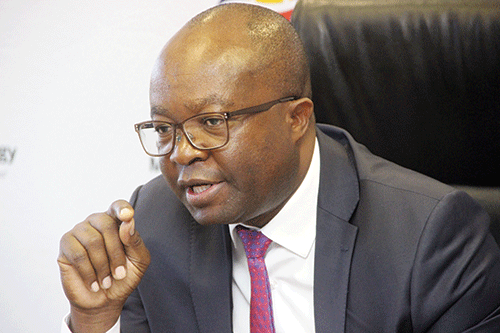Great progress has been made on various fronts of the country’s green hydrogen arena, but the incessant under-representation of Namibians from the Hardap and //Kharas regions remains a huge challenge, especially when it comes to scholarships.
The chairperson of the Namibia Green Hydrogen Council, Obeth Kandjoze, shared this concern during yesterday’s session of the ongoing Green Hydrogen Symposium in the capital.
The symposium is held under the theme: ‘Green Hydrogen in Practice: Green Hydrogen Pilot Projects and Y4H2 Scholarships’ by the Southern African Science Service Centre for Climate Change and Adaptive Land Management (SASSCAL).
“The symposium we are opening today is a well-defined plan of our institution SASSCAL to advance the research in Africa on green hydrogen along the entire value chain of sustainable energy transition,” said SASSCAL board vice chairperson Elijah Ngurare.
He said SASSCAL, as a scientific services’ providing organisation, is particularly proud to lead the discussion, and to create a platform to advance research and projects in the field of green hydrogen.
Kandjoze, who briefed the gathering about the various achievements and inroads the country has made in the green hydrogen space since 2021 during his keynote address, promised that government will start moving at an improved pace to ensure that all Namibians benefit from green hydrogen scholarships.
“Although scholarships were awarded to students from all regions, the //Kharas and Hardap regions – where the first giga-scale projects are planned – are unquestionably under-represented. This was apparent in both cohorts, notwithstanding the preferences in the evaluation criteria. It is, therefore, necessary to make deliberate efforts to ensure that these two regions are sufficiently represented,” the director general of the National Planning Commission (NPC) stated.
To level the playing field, government will put deliberate measures in place to ensure that the programme’s Southern Corridor Development Initiative (SCDI) benefits the people of the two regions.
“To this end, government is exploring a bespoke TVET programme for the southern regions to ensure that when the SCDI projects commence, Namibia has built local capacity across all demographics to absorb the employment opportunities in an equitable manner. We need to ensure that these aspiring students [from the two regions] are supported and uplifted so that they too can meet the requirements to get these scholarships as well”, he added.
The project is being developed as the first step in the implementation of government’s strategy for the development of a large-scale green hydrogen industry, and is being constructed on a 4 000 square km tract of of land within the Tsau //Khaeb National Park.
Set to be the country’s first fully vertically- integrated GW scale green hydrogen project, it aims to support both economic growth in Namibia, and assist the world in achieving its decarbonisation goals.
“The call to action for us all is, where to from here? How do we ensure that all 183 successful scholars have a sustainable green job in a few years from now? How do we create more scholarship opportunities for thousands of Namibians waiting for a similar opportunity? How do we ensure that Namibian green hydrogen exports to Germany are realised before 2030? These are difficult questions that perhaps cannot be answered right away at this forum, but should keep us all awake at night,” he observed.
Mega project
The country’s US$10 billion project is planned to be developed in phases, at full development targeting 350 000 metric tonnes of green hydrogen production a year from 7GW of renewable generation capacity and 3GW electrolyser.
The project will, once fully developed, employ an estimated 3 000 people, with 15 000 construction jobs supported over the four-year construction period. Over 90% of these jobs are expected to be filled by Namibians.
At full production scale and with additional projects coming online, the excess electricity produced by the hydrogen industry can be used to decarbonise the entire Namibian electrical grid, act as a catalyst for Namibia’s own energy independence, and make the country a net-exporter of low-carbon energy, assisting in the decarbonising of the southern African region.
A government-led process
Government, Kandjoze assured, is committed to creating the legal, regulatory, fiscal and commercial frameworks for its hydrogen industry which will be transparent, equitable and value-accretive to Namibia and her people.
Anna Shiweda, the deputy minister of agriculture, water and land reform, emphasised the need to take advantage of Namibia’s abundant resources, such as wind and solar.
She said for Namibia to realise the full implementation of green hydrogen, the country needs to collaborate with international stakeholders.
As a key player, government has assumed the role of custodian of the wealth to be generated from the development of the country’s green hydrogen industry, and plans to do so through the Welwitschia Sovereign Wealth Fund.
The fund will take the role of strategic equity partner in all green hydrogen projects in Namibia, targeting a 24% equity shareholding in Hyphen Hydrogen Energy’s project, with no requirements for additional local equity shareholder participation.
ohembapu@nepc.com.na
Caption:


